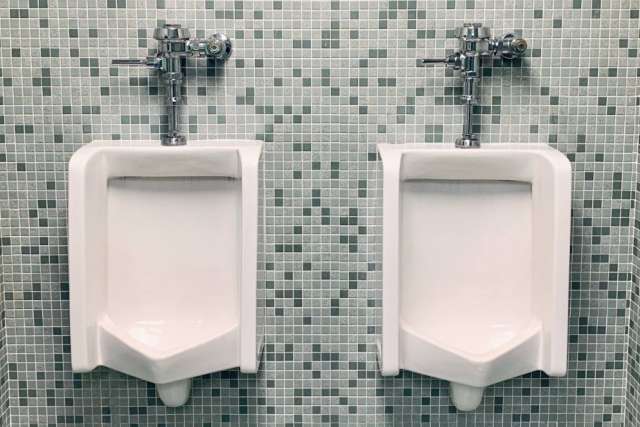Dear Doctors: Would you please devote a column to shy bladder syndrome? This embarrassing condition is a significant inconvenience to many men. In severe cases, it’s a life-altering disability. I suspect there are more sufferers out there than one would imagine, but shame keeps them quiet.
Dear Reader: Shy bladder syndrome is a social anxiety disorder that makes it difficult -- or even impossible -- for an individual to urinate when someone else is present. The medical term is paruresis. Drawn from ancient Greek, the word has its roots in the words “para,” which indicates something atypical or abnormal, and “uresis,” which refers to the act of voiding the bladder. The term was coined in 1952 by two physicians, who were the first to describe the condition in a paper they published in the Journal of General Psychology.
Shy bladder syndrome is a common form of social anxiety, and it is believed to be second only to fear of public speaking in terms of humans’ apprehensions. The exact number of people it affects is not known, but studies suggest up to a quarter of the population has experienced it to some degree. It is seen more often in males, which has been attributed to the public nature of men’s urinals. However, the condition occurs in people of all genders, and of all ages, including children and adolescents.
When someone has shy bladder syndrome, they avoid using bathrooms other than those in their own homes. The possibility that someone else could enter the bathroom, or even overhear them using the toilet, can trigger the condition.
Voluntary urination involves neurons located in a small region in the brainstem known as Barrington’s nucleus. They send signals via the spinal cord to the urinary sphincter, which is the ring of muscle that controls the flow of urine from the bladder. When someone chooses to urinate, those nerve impulses instruct the sphincter to relax.

When someone has shy bladder syndrome, something disrupts that cascade of messages. The result is the person’s sphincter fails to relax, and they are unable to pee. It’s easy to dismiss this as a minor annoyance. But for those living with the disorder, it can range from embarrassing to disruptive, and in some cases, to outright dangerous. Being unable to use a public restroom can interfere with activities of daily life, including work, social interactions, relationships and travel. A routine urine test during a medical appointment or for employment purposes becomes an ordeal. People with severe paruresis will often restrict how much they drink in order to avoid the need to use a bathroom.
Consistently failing to empty the bladder when needed can cause health complications, including urinary tract infections. It can also cause damage to the muscles of the bladder, which, ironically, can lead to urinary incontinence. The good news is that the condition can be treated. This includes the use of relaxation techniques to reduce anxiety, psychotherapy, anti-anxiety medications and cognitive behavior therapy. A systematic program of desensitization known as graduated exposure therapy has been found to be particularly helpful. In order to rule out a medical cause of difficulty urinating, it’s important to see a doctor for a definitive diagnosis.
(Send your questions to [email protected], or write: Ask the Doctors, c/o UCLA Health Sciences Media Relations, 10960 Wilshire Blvd., Suite 1955, Los Angeles, CA, 90024. Owing to the volume of mail, personal replies cannot be provided.)





